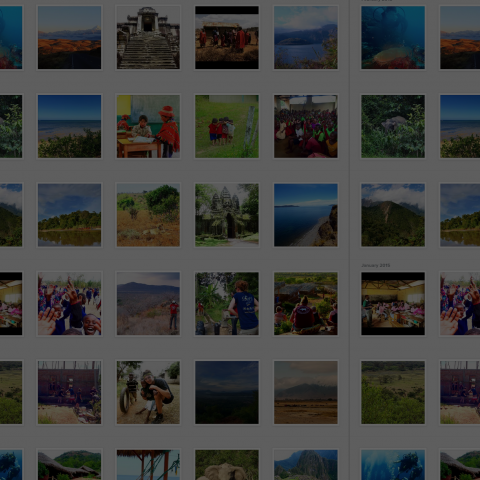22nd March 2013 by Rob Foddering
Alice: The world of video is upon us, Rob. Surely we need a fancy schmancy souped up website to host our 30-second creations?
Rob: Cor blimey, if I had a pound for every time someone asked me that, Alice…
Alice: I see.
Rob: The short answer is no, you do not need a fancy schmancy souped up website to host video. In fact, you shouldn’t be hosting video on your website at all, because it could end up costing an absolute fortune.
Alice: Oh? Revelation. How?
Rob: Videos take up a fair bit of space, so hosting them on your own website costs more money from the outset. Not only that but every time someone plays that video it uses 'bandwidth'. This is the equivalent to using minutes on your mobile phone. Most web hosts include bandwidth (minutes) in their package but if you go over the allowance, you could be looking at paying a fortune.
For instance, if one of those videos goes viral – y’know say, if Stephen Fry tweeted it to his 5,603,564 followers – then you could be in real trouble.
Alice: I thought videos going viral was a good thing?
Rob: Well yes, that’s the dream in terms of audience. But, let’s say you've gone over your allocated bandwidth, you'll have to pay every time someone views your video. If all Stephen Fry’s followers watch it, that’s you re-mortgaging the house and getting rid of the dog.
Alice: Yike-a-roony. So, what’s the solution?
Rob: Get someone else to host it for you and then embed the code into your website. And when I say someone else I mean YouTube, Vimeo or Vine.
Alice: Obviously, we know all know about YouTube. Not quite sure about Vimeo and I always thought a Vine was something Tarzan swung from while bellowing: haaaaaawwwww awa wahhhhh, awa wahhhhhh.
Rob: Did you just look at this YouTube clip in order to transcribe that?
Alice: Erm…
Rob: Moving swiftly on. Shall we do some comparing and contrasting?
Alice: Let’s.
Vimeo
Chief executive, Kerry Trainor, told The Guardian that Vimeo is ‘a high quality video platform for creative people.’ Well, it was set up by a group of filmmakers who wanted to show off their work. That means it looks pretty, is easy to navigate and is respected by the arts community. It now has 15 million members and about 93 million monthly views. Unlike YouTube, you don’t have to sit through a 30-second advert before you watch a clip and there are several different categories to choose from, including ‘arts’. You can enhance your videos and add soundtracks. There are a few downsides though. You only get 500MB of upload space per week on the basic package, for example. The basic package is free. It gives you:
- 500MB per week of upload space
- 1 HD video upload per week
- Up to 10 video uploads per day
- 1 Channel, 1 Group, and 3 Albums
- Ability to download converted files
- Robust privacy controls
- Basic embedding features
- Huge street cred (their words not ours)
- Vimeo also says you can’t upload videos as a business for free, but exceptions include: independent production companies, authors, artists, musicians, nonprofits, and actors who want to promote the work they have created.
You can increase your upload space by signing up to one of Vimeo’s ‘pay for’ packages. There’s Vimeo Plus ($9.95 per month) and Vimeo Pro ($199 per year)
More about upgrading.
Wired Canvas verdict:
Vimeo is the best choice if you want to share your video without adverts. Good for creative videos and those in the creative industries.
YouTube
In terms of style, YouTube is like Ikea to Vimeo’s Habitat. It is a true juggernaut with more than 800 million unique users a month watching 4 billion hours of video. All users can upload unlimited videos of up to 15 minutes for free. You can upload video that is longer, but must verify your account, which means dishing out your mobile phone number in order to be given an access code. You can edit video and add sound. YouTube also allows you to make money through adverts. YouTube is THE place for watching videos of cats acting up.
This is what you can do for free:
- All users can upload videos of up to 15 minutes. You can apply to upload longer videos by punching in a code they text you – this means giving out your mobile phone number, however.
- Supports 3D
- Video editor – you can edit your videos directly in YouTube and add music
- YouTube Insight - analytics and reporting tool so you can view detailed statistics about who’s watching your videos
- Private sharing and unlisted videos – in case you want just a select few to see your work of art.
- Ability to make money through adverts.
Wired Canvas verdict:
Good if you want additional traffic and revenue.
Alice: Oh dear. I can see benefits in using both. What should we do?
Rob: Fret not dear heart. Luckily, Marco of The Film Shortage has a good solution:
‘Still use Vimeo, even though you don’t have all the options, an attractive video presence will give your short more professionalism. Launch your film on Vimeo, point everyone to the same link for the first few weeks, and once your first wave of hits passes, upload your video to YouTube as well, so you have a link for mobile users, and for random searches.’
Alice: Thanks Marco, you are wise indeed. So, what about Vine?
Vine
Rob: Vine is a video app from Twitter that allows you to create and then post video loops of six seconds or less.
Alice: Six seconds! What can you film in that time?
Rob: It’s probably best not to dwell on that, but research suggests that short videos rule. Just look at this graph on Wistia.com.
In fact, this week even advertising guru Trevor Beattie announced that the 30-second TV ad was dead.
He told the Advertising Week Europe conference: ‘Our absorption of information these days is so fast. With Vine, you know if you like something within two seconds.’
Alice: Well, If Trevor likes it… But is Vine any good for arts organisations?
Rob: It most certainly is. Vine videos make the most brilliant teasers for your exhibition or event.
Check out this short video from the Chicago Museum of Contemporary Art to promote its Destroy the Picture exhibition.
You can also record sound, so could make a film with a sound bite from the artist or – whisper it – a celebrity to promote the event.
Alice: Sounds great. Any downsides?
Rob: Currently, it’s only available on Apple products.
Wired Canvas verdict:
Who knows how Vine will work out. It could be the next big thing.
Rob: Phew. Shall we re-cap in hand bullet point form?
Alice: Let’s.
- You don’t need a fancy schmancy souped up web host to show off your videos
- Instead, upload them to YouTube or Vimeo and then embed the links into your website.
- Vimeo is designed by film makers for more creative types and as such have a very pleasing interface and more arty content.
- However, the free package only allows 500MB per week of upload space
- YouTube has a much bigger audience and you can add an unlimited number of videos, but its interface is Ikea to Vimeo’s Habitat.
- Why not upload your arts video to Vine and embed that link to your website and then add it to YouTube anyway.
- Vine is a free video app from Twitter that allows you to create and then post video loops of six seconds or less.
- Vine videos make great creative teasers to promote your event or exhibition.
- Currently Vine is only available on Apple products.
Final Word
Whatever platform you use, video should be used wisely, to encapsulate something quickly. A lot of people will spend 10 seconds watching a video and if it’s rubbish they’ll move on.
Alice: Hey, we managed a whole post without mentioning Justin Bieber…
Rob: Sigh.











